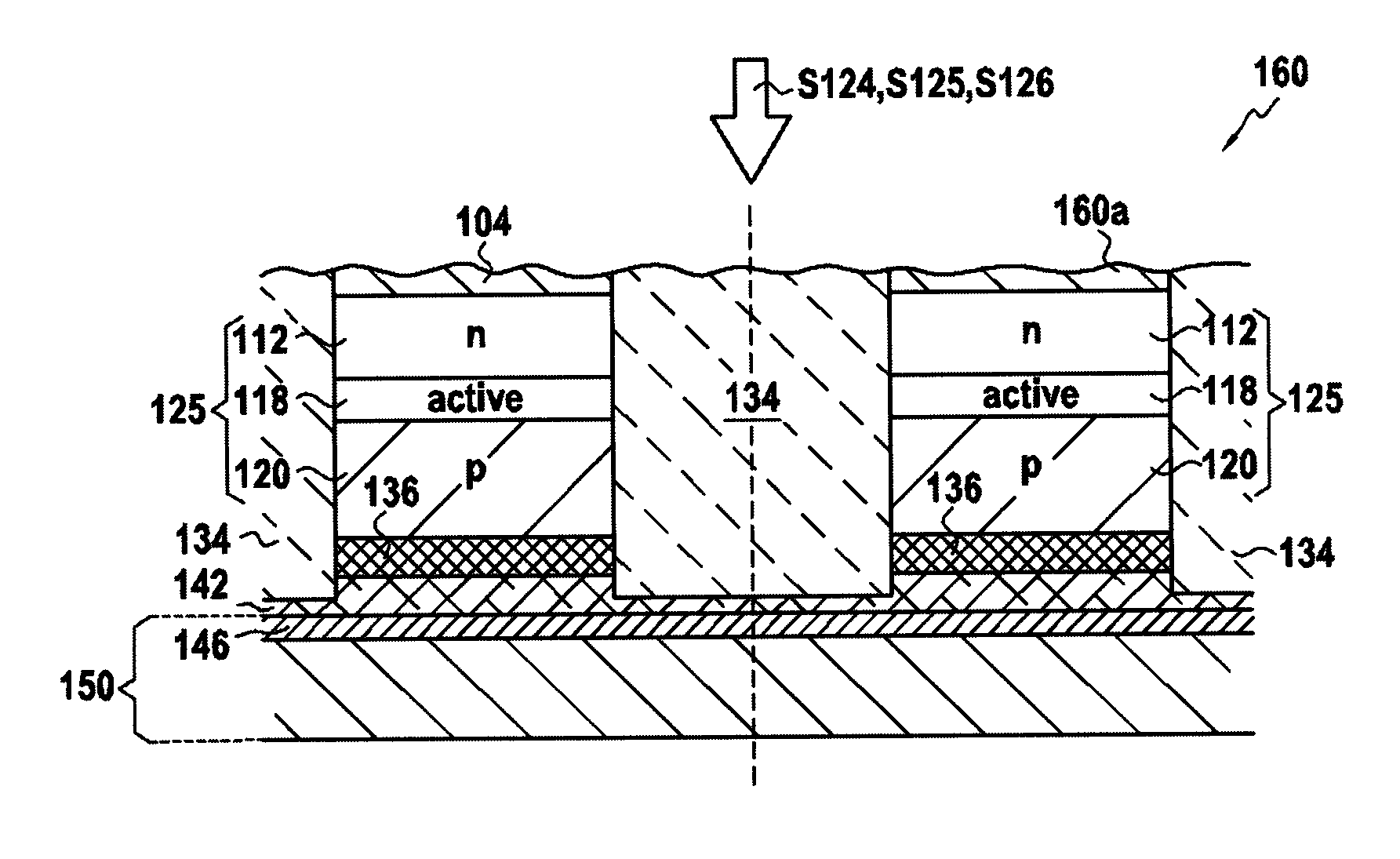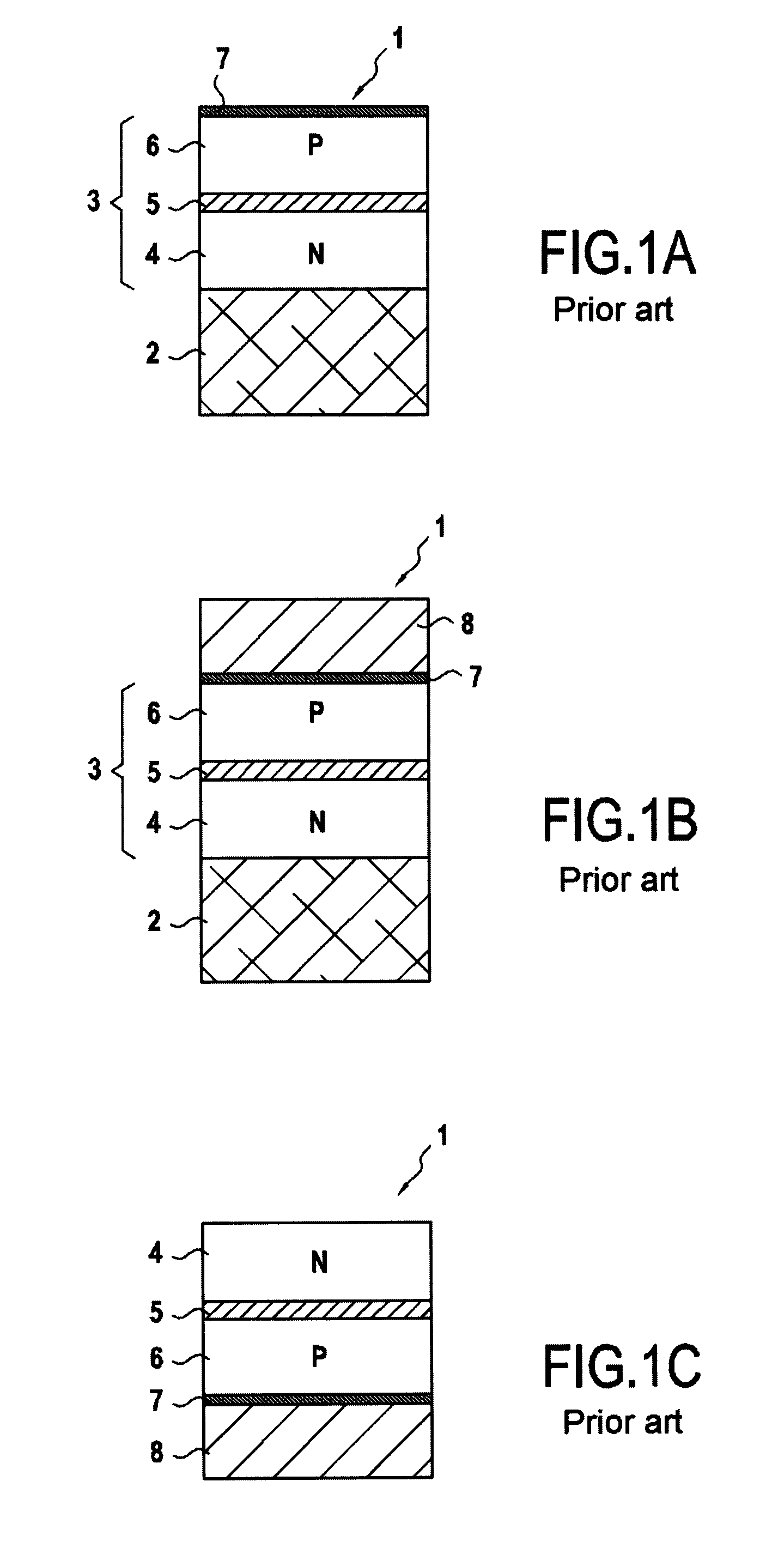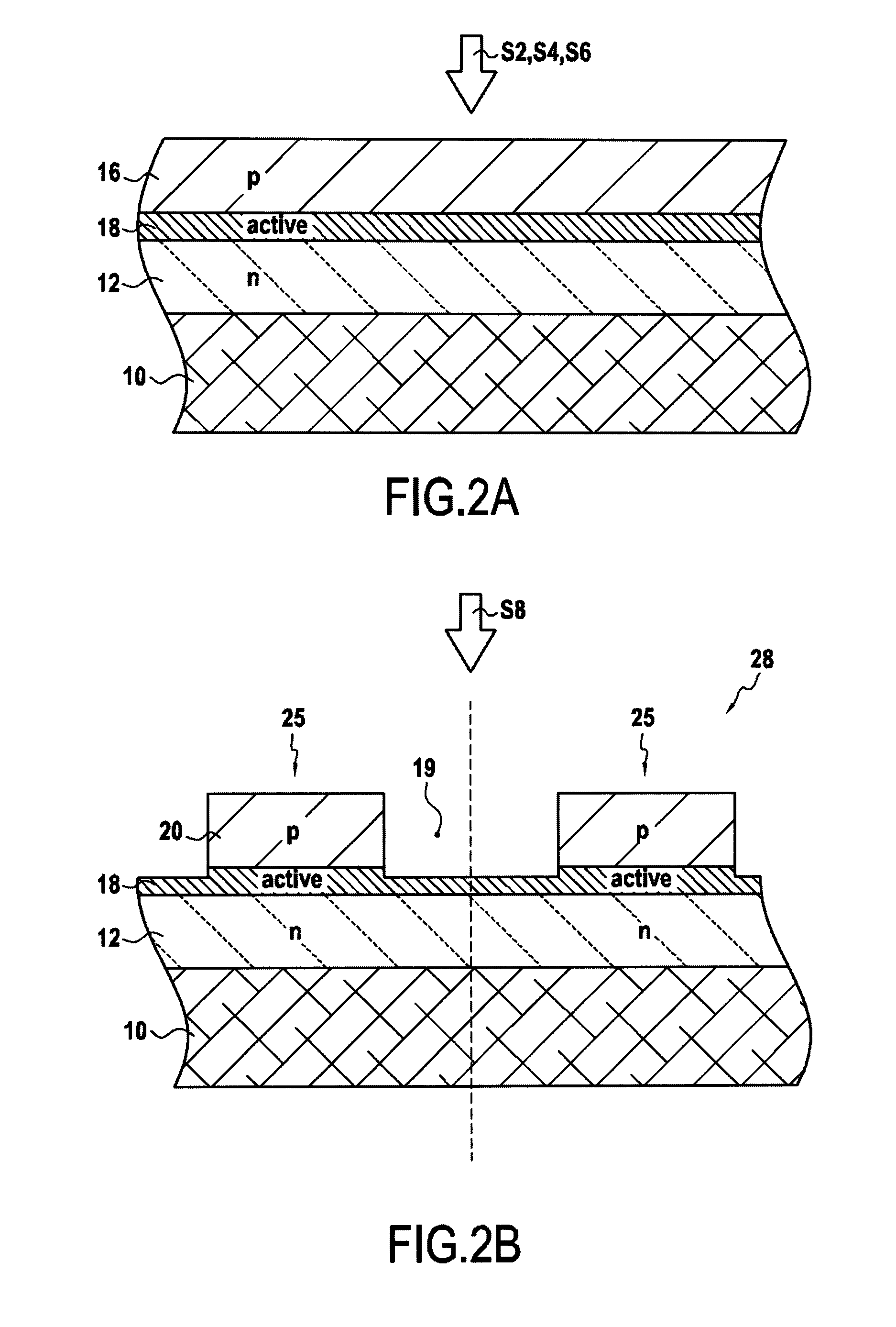Method of manufacturing structures of leds or solar cells
a technology of leds and solar cells, applied in the manufacture of final products, basic electric elements, solid-state devices, etc., can solve the problems of reducing the manufacturing yield of the structure in question, limiting the choice of materials that can form the substrate, and being expensive and relatively unavailable on the material market. , to achieve the effect of improving the quality of bonding
- Summary
- Abstract
- Description
- Claims
- Application Information
AI Technical Summary
Benefits of technology
Problems solved by technology
Method used
Image
Examples
first embodiment
[0045]A method of manufacturing LED devices in accordance with the disclosure is now described in reference to FIGS. 2A to 2I and 3.
[0046]In a first embodiment, the method is implemented from a plate or support substrate 10. The support substrate 10 is sapphire in this example, other materials, however, being possible, notably such as silicon, silicon carbide or germanium.
[0047]An n-type layer 12 (about 1 or 2μm in thickness), an active layer 14 (about 10 nm) and a p-type layer 16 (between about 100 nm and 200 nm in thickness) are first deposited successively by epitaxy on the support substrate (10) (respectively, S2, S4 and S6, FIG. 2A). The manner in which these layers are prepared is known to the person skilled in the art and, thus, will not be described in further detail in this document.
[0048]The n- and p-type layers can be formed in the reverse order and can include several sub-layers of different compositions, thicknesses or dopant concentrations, comprising unintentionally d...
second embodiment
[0094]FIGS. 4A to 4I and 5 represent the manufacture of LED devices in accordance with the disclosure.
[0095]This second embodiment is on the whole very similar to the first embodiment described above in reference to FIGS. 2A-2I and 3.
[0096]This second embodiment differs from the first in that the elemental LED structures (here noted 125) are formed on a composite growth substrate 100, the latter comprising a support substrate 110, a buried layer 102 and growth islands 104 (FIGS. 2A and 2B).
[0097]The support substrate (here 101) consists of sapphire. Substrate 110 can also be composed of a semiconductor material, notably, such as silicon, silicon carbide or germanium. The buried layer 102 is an adaptation layer prepared here in SiO2. The growth islands 104 are obtained from a growth layer of relaxed material, here a layer of InGaN prepared, for example, by epitaxial growth on a seed layer of GaN and then transferred onto the support substrate 110 via the buried layer 102.
[0098]Trench...
PUM
| Property | Measurement | Unit |
|---|---|---|
| surface roughness | aaaaa | aaaaa |
| temperature | aaaaa | aaaaa |
| temperature | aaaaa | aaaaa |
Abstract
Description
Claims
Application Information
 Login to View More
Login to View More - R&D
- Intellectual Property
- Life Sciences
- Materials
- Tech Scout
- Unparalleled Data Quality
- Higher Quality Content
- 60% Fewer Hallucinations
Browse by: Latest US Patents, China's latest patents, Technical Efficacy Thesaurus, Application Domain, Technology Topic, Popular Technical Reports.
© 2025 PatSnap. All rights reserved.Legal|Privacy policy|Modern Slavery Act Transparency Statement|Sitemap|About US| Contact US: help@patsnap.com



